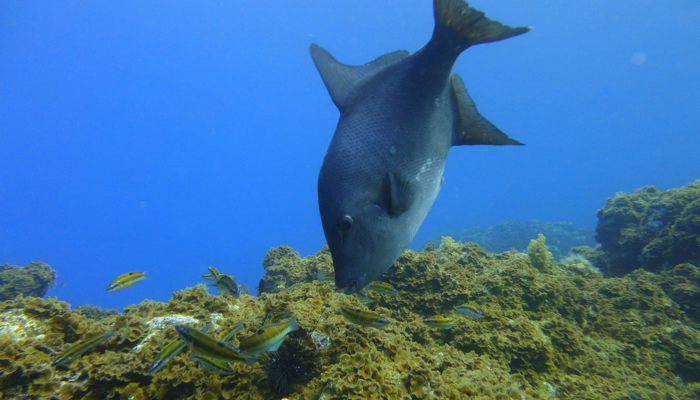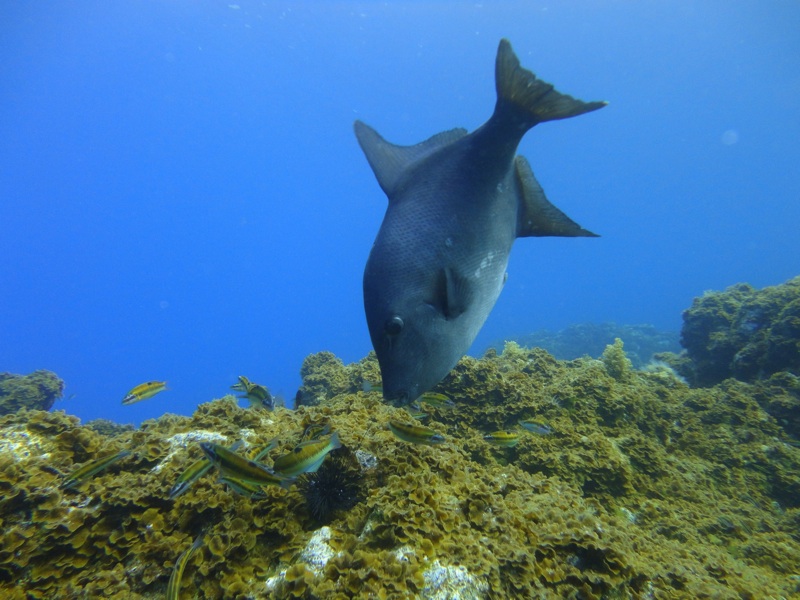
No-take areas as an effective tool to restore urchin barrens on subtropical rocky reefs
- Post by: jocarher
- 12:48PM Sep 28, 2012
- No Comment
Rapid declines in the sea urchin Diadema aff. antillarum densities and shifts in community states of sublittoral rocky reefs have been observed over a short period (between 2004 and 2008) for the first time in an area with fishing restrictions (the MPA of La Palma, Canary Islands, eastern Atlantic Ocean). Changes were spatially variable according to the MPA’s use area considered. During this period there was a sea urchin density reduction (in some cases from 3.34 to 0.45 indv.m2), and an increase of erect seaweed (up to 30% of cover) in the sites of the no-take area. In the partially restricted fishing area, the effect was less clear and only some sites, near to the no-take area, showed the sea urchin reduction and seaweed growth, in contrast to the increase of sea urchin densities outside the MPA. In addition to increased coverage, there was also a replacement of the ephemeral species by the perennial seaweed Lobophora variegata. These changes were related to increases in the abundance of fish predators of the sea urchins. In the no-take area, where there is total fishing restriction, predators were so abundant to induce shifts in the benthic community, while in the partially protected area such as outside the MPA, fishing prevented the top-down process and the changes in the communities.
